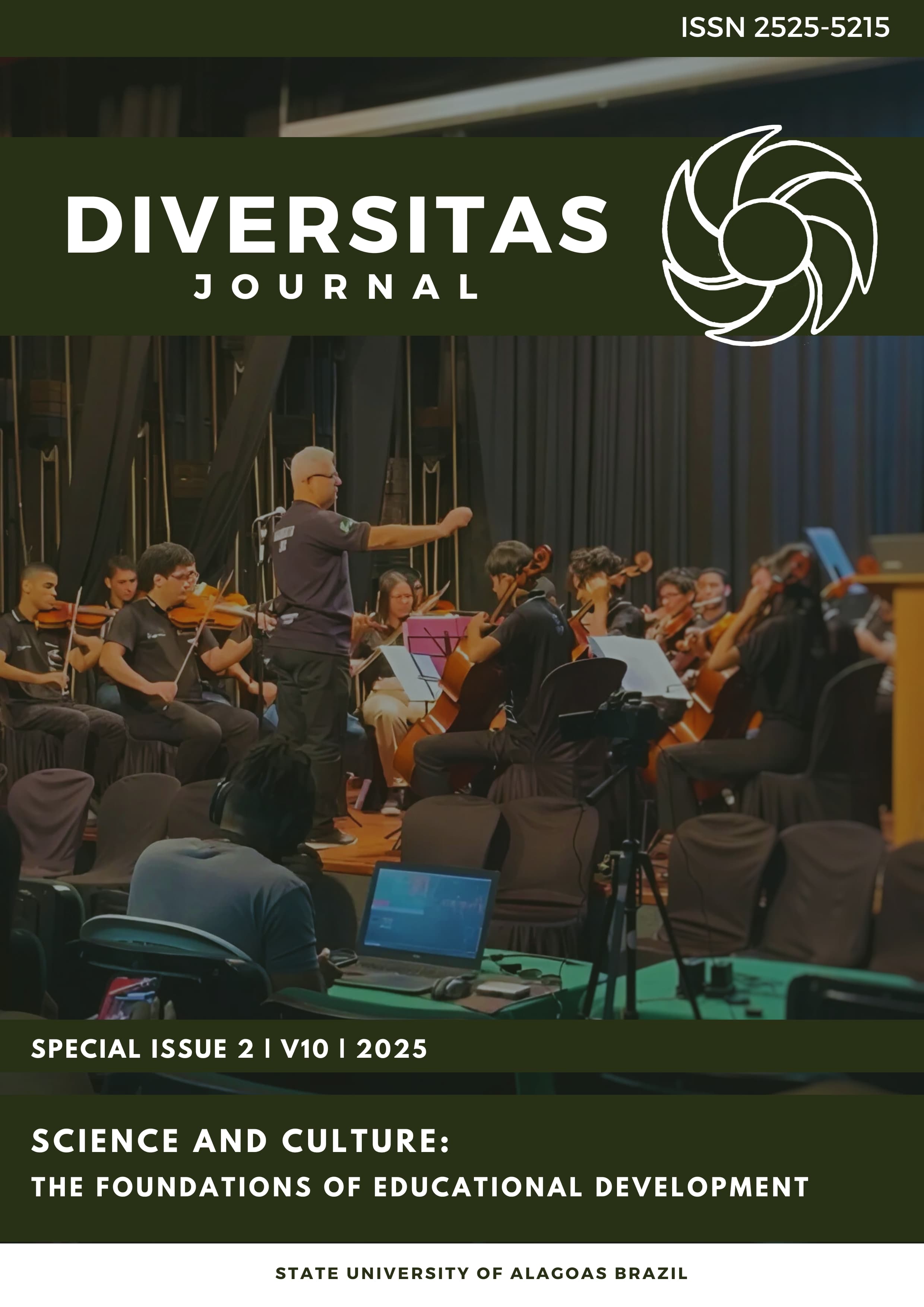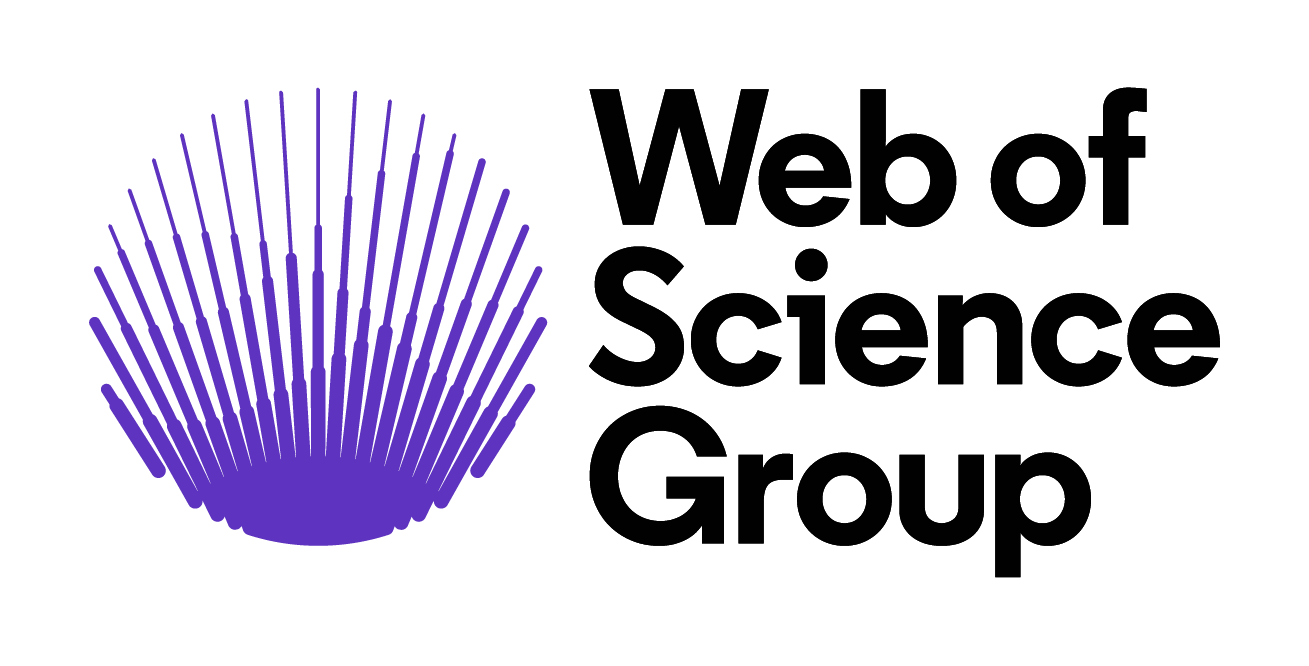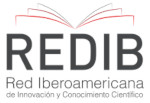Morfologia polínica da flora apícola relacionada ao período de entressafra da colheita de mel
DOI:
https://doi.org/10.48017/dj.v10iEspecial_2.3322Palavras-chave:
Banco polínico, Mel, EntressafraResumo
O presente estudo foi desenvolvido em um remanescente de caatinga arbórea preservada próximo ao município Santana do Ipanema-AL conhecido como “Serra da Camonga (coordenadas-9.35436958913005,-37.207209348791764). As Análises morfológicas para identificar as plantas visitadas pelas abelhas foram realizadas no Laboratório de Pesquisa em Angiospermas da Caatinga (LaPac) da UNEAL em Santana do Ipanema. As espécies de flores identificadas durante o levantamento florístico nos apiários foram coletadas de cada indivíduo e foi retirado um botão floral. Foram identificadas 37 espécies floridas na área de estudo, distribuídas em 20 famílias botânicas. As famílias com maior destaque foram Fabaceae, Asteraceae e Verbenaceae. O desenvolvimento deste trabalho permitiu a identificação de 37 espécies vegetais apícolas presentes em áreas de Caatinga. Observou-se que há uma maior diversidade de plantas em florescimento. A maioria das espécies vegetais coletadas oferece tanto pólen quanto néctar, com a família Fabaceae destacando-se pela maior riqueza de espécies.
Métricas
Referências
AGUIAR, L. M. C. Utilização de recursos florais por abelhas (Hymenoptera, Apoidea) em uma área de Caatinga (Itatim, Bahia, Brasil). Revista Brasileira de Zoologia, v. 20, p. 457-467, 2003.
ALVES, T. T. L.; SILVA, J. N.; MORAES, M. S.; CRISPIM, S. S.; BEZERRA, D. L.; MOTA, D. D. G. Caracterização físico-química do pólen polifloral coletado por abelhas africanizadas (Apis mellifera L.) na região do Cariri cearense. Acta Apícola Brasílica, v. 3, n. 2, p. 19-22, 2015.
ARRUDA, C. M. F.; MARCHINI, L. C.; SODRÉ, G. S.; MORETI, A. C. C. C. Características físico-químicas de amostras de méis de Apis mellifera L., 1758 (Hymenoptera, Apidae), da região da chapada do Araripe, Município de Santana do Cariri, Estado do Ceará. Boletim de Indústria Animal, v. 61, n. 2, p. 141-150, 2004.
ALMEIDA, Maria. Propriedades medicinais dos meles de Ipomoea e Mimosa. Rio de Janeiro: Editora Acadêmica, 2019. p. 78-79.
BARTH-SCHATZMAYR, O. M. A utilização do pólen na interpretação da flora apícola. In: XVI Congresso Nacional de Apicultura, 2006.
BRASIL. Apicultura: princípios e técnicas. Brasília: Ministério da Agricultura, Pecuária e Abastecimento, 2000.
BRASIL, D. F.; GUIMARÃES-BRASIL, M. O. Principais recursos florais para as abelhas da caatinga. Scientia Agraria Paranaensis, v. 17, n. 2, p. 149, 2018.
BATISTA, S. C. D. M.; PESSOA, S. M. R.; GOIS, C. G. Alimentação das abelhas: revisão sobre a flora apícola e necessidades nutricionais. Journal of Biology & Pharmacy and Agricultural Management, v. 14, n. 1, 2018.
CALDAS, M. J. M.; SILVA, I. P.; MACHADO, C. S.; CARVALHO, C. A. L.; SODRÉ, G. S. Qualidade e perfil antimicrobiano do mel de Melipona asilvai. Brazilian Journal of Development, v. 6, n. 5, p. 32760-32768, 2020.
CANCELLI, R. R.; SCHNEIDER, A. A.; BAUERMANN, G. S. Morfologia polínica do gênero Pluchea Cass. (Asteraceae), no Rio Grande do Sul, Brasil. Revista Brasileira de Paleontologia, v. 9, n. 1, p. 149-156, 2006.
COUTO, L. A.; COUTO, H. B. Apicultura: manejo e produtos. Jaboticabal: FUNEP, 2006.
DUARTE, A. W. F.; LOPES, A. M. G.; CONSERVA, L. M.; LIRA, G. M. Mel de abelhas nativas e africanizadas do estado de Alagoas: composição química, segurança microbiológica e atividade terapêutica. 2009. Dissertação (Mestrado em Nutrição) – Faculdade de Nutrição, Programa de Pós-Graduação em Nutrição, Universidade Federal de Alagoas, Maceió, 164 p.
COSTA, Pedro. Valorização do mel de entressafra e suas características únicas. Belo Horizonte: Editora do Conhecimento, 2021. p. 102-103.
ERDTMAN, G. The acetolysis method: a revised description. Svensk Botanisk Tidskrift, v. 54, p. 561-564, 1960.
GIANNINI, T. C.; LAURINO, M. C.; RIBEIRO, M. F. Métodos de Pesquisa Laboratório de Abelhas – USP.
MATOS, V. R.; SANTOS, F. A. Pollen in honey of Melipona scutellaris L.(Hymenoptera: Apidae) in an Atlantic rainforest area in Bahia, Brazil. Palynology, v. 41, n. 1, p. 144-156, 2017.
HARRIS, J. G.; HARRIS, M. W. Plant Identification Terminology: An Illustrated Glossary. 2. ed. Spring Lake Publishing, 2001.
HICKEY, L. J. Classification of the architecture of dicotyledonous leaves. American Journal of Botany, v. 60, n. 1, p. 17-33, 1973.
OLEGÁRIO, T. G.; SANTOS, J. T.; TRINDADE, J. L. F. Pólen: propriedades nutricionais e benefícios à saúde humana. 2011.
RADFORD, A. E.; DICKISON, W. C.; MASSEY, J. R.; BELL, C. R. Vascular plant systematics. Harper & Row, 1974.
RIZZINI, C. T. Sistemas de classificação de angiospermas. 2. ed. São Paulo: EDUSP, 1977
SANTOS, R. F. Ecologia das abelhas. São Paulo: Editora Científica, 1956.
SILVA, M. et al. Inventário de espécies vegetais apícolas na Caatinga paraibana. Revista Brasileira de Botânica, v. 31, n. 3, p. 456-465, 2008.
SILVA, G. V.; SANTOS, A. S.; SILVA, K. J. M.; SILVA, M. G.; GOMES, F. A. L. Levantamento de plantas invasoras com potencial apícola em área de plantio de moringa. Meio Ambiente (Brasil), v. 2, n. 2, p. 37-46, 2020.
SILVA, J. R. S.; CABRAL, H. G.; MADURO, B. C.; MACIEL, S. E. Espécies vegetais utilizadas como pasto apícola por abelhas Apis mellifera L. (Hymenoptera, Apidae) em área de savana de Roraima, Brasil. Boletim do Museu Integrado de Roraima, v. 14, n. 1, p. 50-61, 2021.
SILVA, M. A. Palinologia e biologia da reprodução de plantas apícolas da Caatinga. Fortaleza: Edições, 2007.
SCARAMUCCI, C. P.; SILVA, T. F. Cadeia produtiva do mel: revisão de literatura. Anais do XVII Simpósio de Ciências Aplicadas da FAEF, Editora FAEF, 2014.
TROVÃO, D. M. et al. Levantamento de plantas apícolas na Caatinga. Revista de Biologia Tropical, v. 57, n. 1-2, p. 45-56, 2009.
TEIXEIRA, C. M. de L. Evolução crustal dos domínios Central e Pernambuco-Alagoas da Província Borborema na Folha Vitória de Santo Antão (Pernambuco – Nordeste do Brasil). 2015. Tese (Doutorado em Geociência) – Universidade Federal de Pernambuco, Recife, 2015.
WEBERLING, F. Morphology of flowers and inflorescences. Cambridge: Cambridge University Press, 1992.
Downloads
Publicado
Como Citar
Edição
Seção
Licença
Copyright (c) 2025 Camila Chagas Correia

Este trabalho está licenciado sob uma licença Creative Commons Attribution 4.0 International License.
O periodico Diversitas Journal expressa que os artigos são de unica responsabilidade dos Autores, conhecedores da legislação Brasileira e internacional. Os artigos são revisados pelos pares e devem ter o cuidado de avisar da possível incidencia de plagiarismo. Contudo o plagio é uma ação incontestavel dos autores. A Diversitas Journal não publicará artigos com indicios de Plagiarismos. Artigos com plagios serão tratados em conformidade com os procedimentos de plagiarismo COPE.
A violação dos direitos autorais constitui crime, previsto no artigo 184, do Código Penal Brasileiro:
“Art. 184 Violar direitos de autor e os que lhe são conexos: Pena – detenção, de 3 (três) meses a 1 (um) ano, ou multa. § 1o Se a violação consistir em reprodução total ou parcial, com intuito de lucro direto ou indireto, por qualquer meio ou processo, de obra intelectual, interpretação, execução ou fonograma, sem autorização expressa do autor, do artista intérprete ou executante, do produtor, conforme o caso, ou de quem os represente: Pena – reclusão, de 2 (dois) a 4 (quatro) anos, e multa.”


















